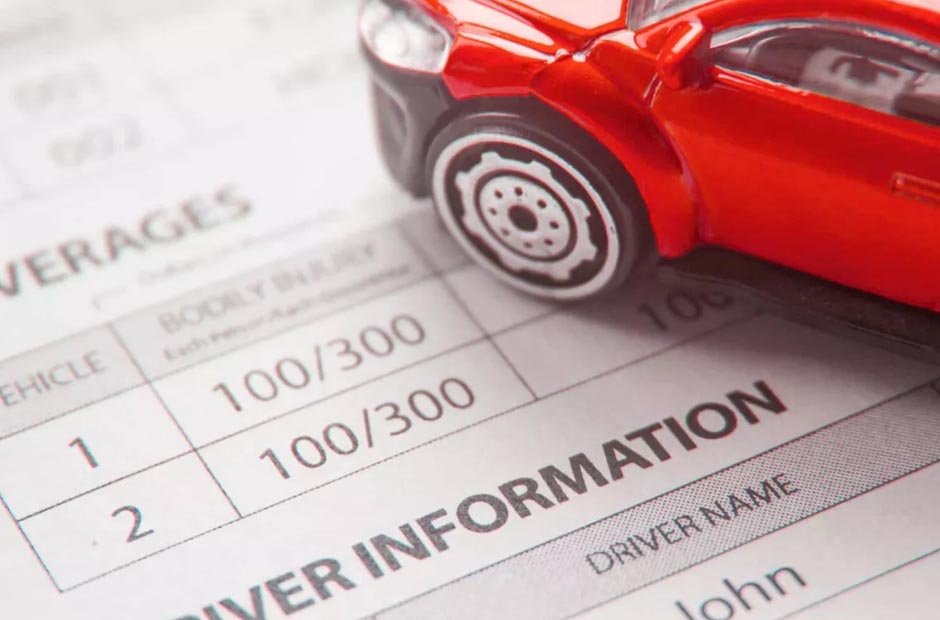Navigating auto insurance terminology can feel overwhelming when providers use unfamiliar jargon. To make informed choices when selecting coverage, drivers should understand some common insurance language. Here, we are going to look at key auto insurance terms in plain English and expanded detail so you can shop policies with confidence.
Table of Contents
What is Collision Insurance?
Collision coverage helps pay for repairs or replacement if you damage your car in an accident with another vehicle or stationary object. All drivers strive to be the best they can, but sometimes accidents happen. Driver inattention or distraction causes nearly 30,000 accidents yearly in New York City alone. It does not cover damage from hitting animals. Collision insurance has a deductible, which is the amount you pay out of pocket before coverage kicks in. Your provider covers remaining repair costs up to specified coverage limits.
Collision insurance is important for:
- Repairing dents, dings, and crunched metal from accidents
- Replacing totaled vehicles that the policyholder is at fault for damaging
- Covering accidents involving other cars, trees, poles, guardrails, and other stationary objects
- Paying for rental cars while damaged vehicles are in the shop
Without collision coverage, drivers pay all these expenses entirely out of pocket.
Comprehensive Coverage: What Does It Cover?
Comprehensive insurance helps pay for damage to your vehicle that is not caused by collisions. Some common claims include:
- Theft of the vehicle or vandalism
- Damage from falling objects, explosions, or civil unrest
- Fires from mechanical failure, arson, or accidents
- Natural disasters like floods, hailstorms, or tornadoes
- Collisions with animals like deer, birds, or bears
Like collision, comprehensive coverage has a deductible you pay first before insurance coverage activates. It provides vital protection against a wide range of non-collision damage that could be very costly without this coverage.
Understanding Bodily Injury Liability
Also called BI coverage, bodily injury liability insurance helps pay legal costs and damages if an at-fault accident injures someone else. Your liability limits determine how much coverage you get. For example, The Hartford provides these sample figures: 50/100 BI split limit means up to $50,000 bodily injury coverage per injured person, up to $100,000 total per accident.
BI coverage is essential for drivers who cause accidents that injure others. It helps pay for others’ medical treatment, rehabilitation, lost wages, pain and suffering. Without enough BI insurance, you will be liable to pay these massive costs.
What is Personal Injury Protection (PIP)?
Known as no-fault coverage, personal injury protection helps cover medical expenses for injuries to you, family members, and passengers after an accident. It pays these costs regardless of who caused the accident. PIP also helps cover you if you’re hit as a pedestrian.
Typical expenses PIP covers include:
- Doctor visits, hospitalization, surgery
- X-rays, casts, stitches, rehabilitation
- Lost wages from missed work due to injuries
- In-home care or nursing services
- Funeral costs in the event of death
PIP provides vital medical payments protection no matter who was at fault in the accident. It gets covered benefits to injury victims quickly.
What is Uninsured Motorist Coverage?
Uninsured motorist coverage protects you if an at-fault driver either does not have insurance or does not have enough coverage to pay for injuries to you, family members, and passengers. This prevents you from incurring major medical bills through no fault of your own. Given that the Insurance Research Council estimated that one in seven drivers had no insurance in 2022, it is vital to find coverage to protect you financially should you be involved in an incident with an uninsured driver.
Uninsured motorist coverage helps pay for injuries if:
- The at-fault driver has no insurance whatsoever
- The at-fault driver’s insurance limits are too low to cover claim costs
- The accident involves a hit-and-run driver who flees the scene
Without uninsured motorist protection, you would have to pay potentially enormous medical expenses even when the accident wasn’t your fault. This coverage gives essential financial protection.
What is Gap Insurance?
Gap insurance pays the difference between what your vehicle is worth (its actual cash value) and what you still owe on your auto loan if the car is totaled or stolen. It protects consumers when they owe more than the vehicle’s value, which is common on newer cars.
For example, if you owe $15,000 on your car loan but the car’s value is only $10,000, gap insurance would pay the $5,000 difference, so you don’t take a major financial loss. This coverage is very beneficial for leased or financed vehicles.
The Key Takeaways: Navigating The Auto Insurance World
The various components of insurance offer different protections, from covering damages in accidents to safeguarding against theft, natural disasters, and uninsured drivers. Knowing what each type of insurance covers ensures you can make informed decisions about your policy, potentially saving you from significant financial burdens in the event of an accident or theft.
Whether you’re repairing your car after a collision, protecting yourself against uninsured drivers, or ensuring medical expenses are covered, the right auto insurance policy provides peace of mind on the road. Equip yourself with the knowledge of these key terms, and shop for auto insurance with confidence, ensuring you and your vehicle are adequately protected in any scenario.
